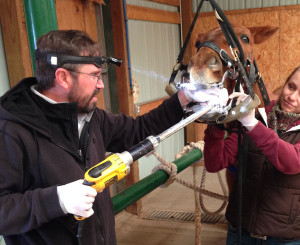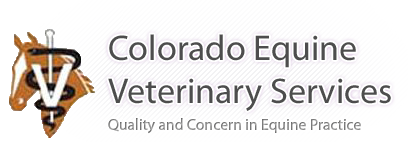
A periodic dental examination is essential to your horses health and performance.
Because the horse’s lower jaw is narrower than its upper jaw, and the normal grinding motion horse’s use during chewing, sharp points tend to form along the edges. Cheek teeth tend to develop sharp enamel points forming on the cheek side of the upper jaw and the tongue side of the lower jaw. These “points” develop even under normal grazing conditions.
Floating is the “rasping,” or filing of points on the teeth to prevent them from cutting the cheek or tongue. Floating might involve leveling of the molar arcades or rounding the surface of the second premolar to resemble the end of a thumb. The goal of floating is to maintain the symmetry and balance of the arcade and to allow free chewing motion.
Why use a Power Float?
- Power floating is up to 75% faster than traditional floating, this means the task will be completed more quickly minimizing the stress on your horse.
- Your veterinarian will be able to access all areas of the mouth. Most rear molar hooks and ramps can be reduced in seconds.
- Because of a better view is possible when using power equipment, the veterinarian will be able to balance the arcades with more precision.
It is estimated 25% of today’s horses have dental problems. The horse’s lower jaw is narrower than its upper jaw, and due to the grinding motion during chewing, sharp points often form along the edges. Points often form on the cheek side of the upper jaw and the tongue side of the lower jaw.
Most of the problems occur when the upper and lower teeth do not meet properly in the chewing process, and the horse cannot properly masticate its food. Routine dental care and an exam, every six months, can help prevent dental problems. With this exam the veterinarian can find points, hooks, and ridges resulting from malocclusion. They can determine if there are dental fractures, recurring malocclusions, and check on the condition of your horse’s cheek teeth.
If the teeth develop a quarter inch ridge, the feed will not be chewed properly. It becomes packed between the teeth, and can lead to gingivitis, periodontal disease, and the loosening of the teeth.
Part of this examination may involve floating or filing the edges of the teeth with a specially designed rasp-like tool. CEVS veterinarians use a full mouth speculum to allow greater thoroughness in the examination and more precision in performing corrective procedures. The goal of floating is to maintain the symmetry and balance of the teeth and allow free chewing motion.
